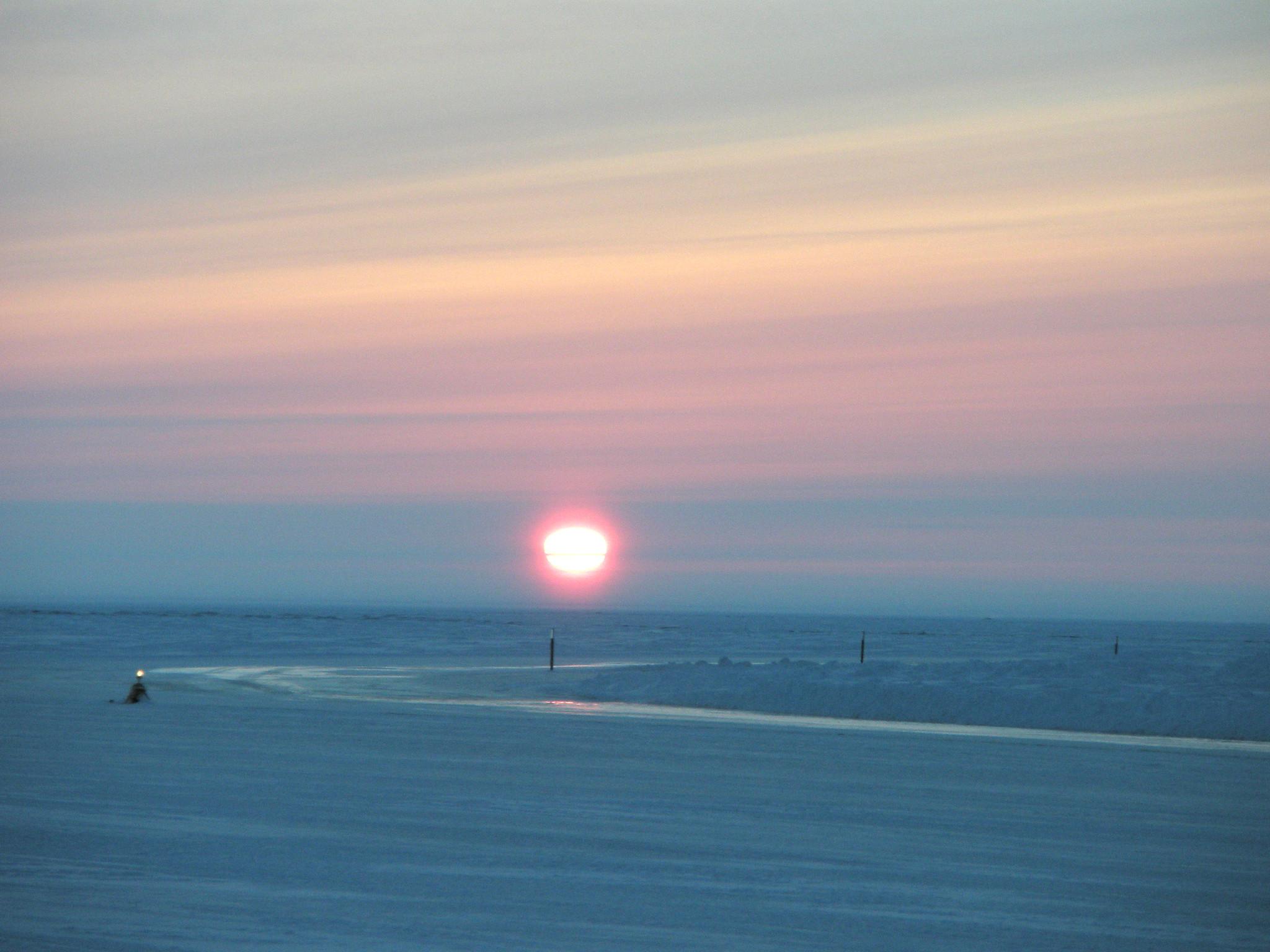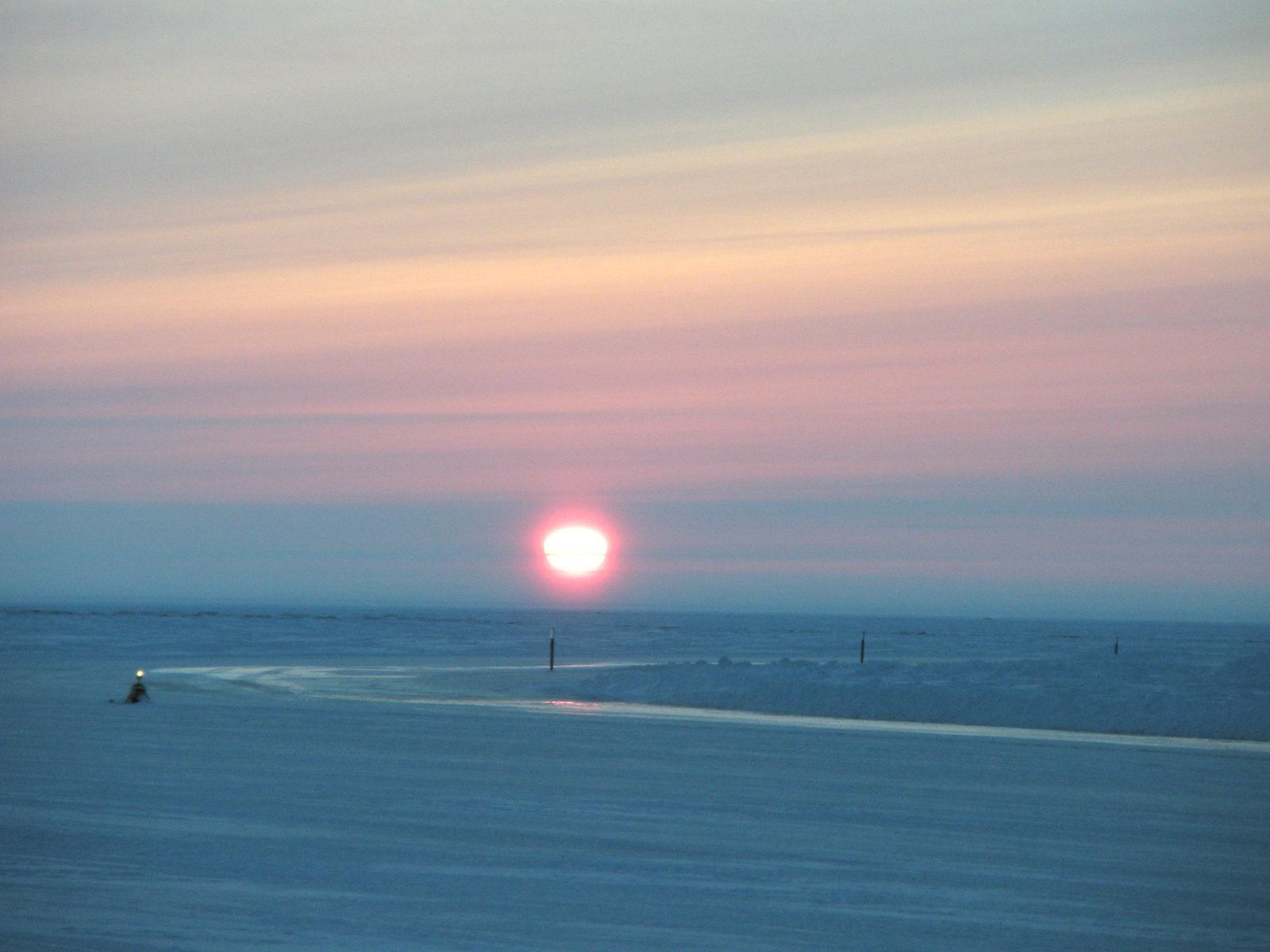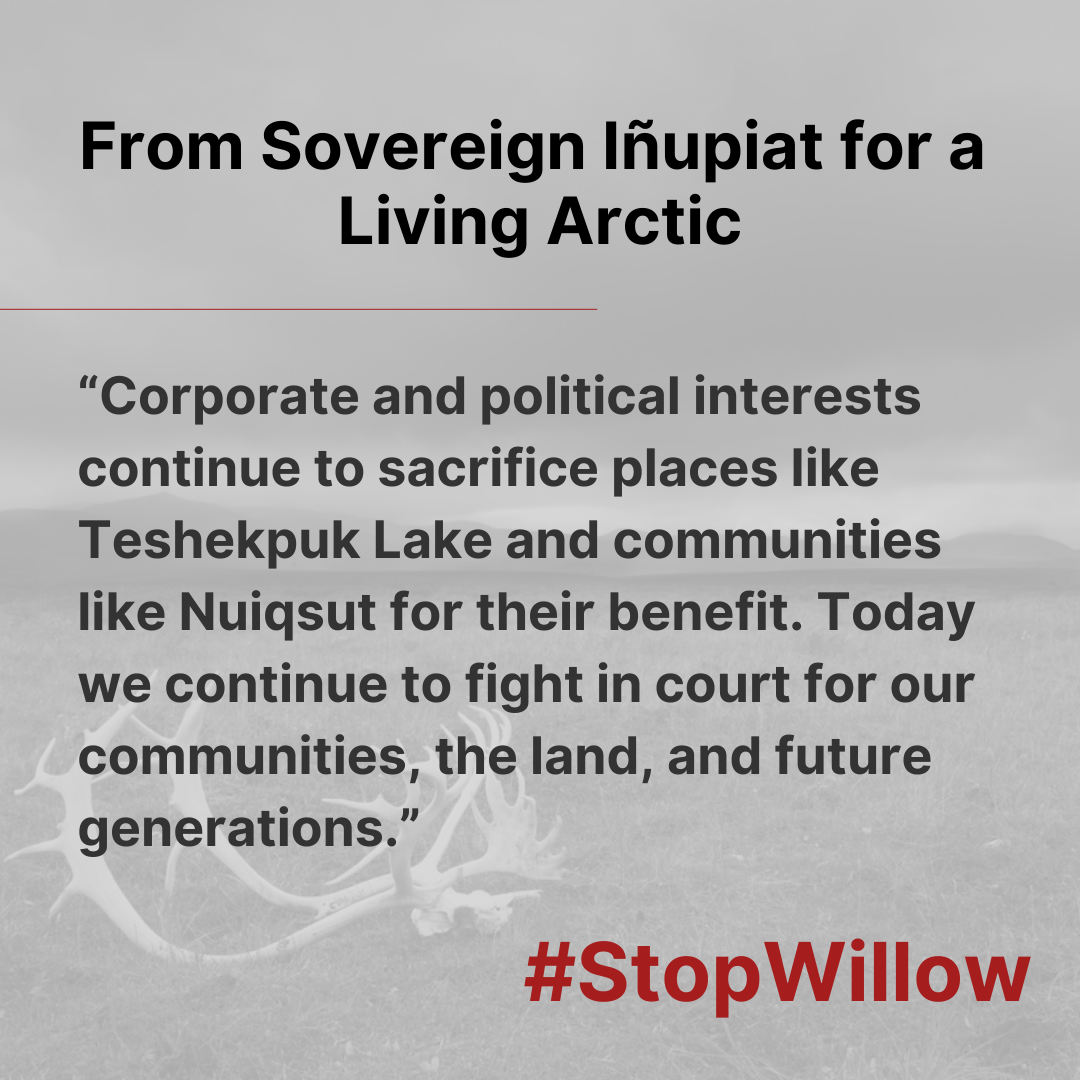
Litigation 101: What’s a motion for a preliminary injunction and how did ours play out in our Willow litigation?
By Dawnell Smith
How does the legal system define a motion? It’s a way for any party in a lawsuit to ask the court to make decisions on certain issues. Motions can ask the judge to do an array of things, like changing where the case is heard, telling one party to release evidence or information to another, or agree to decide a case without oral argument.
A motion for preliminary injunction asks the court to prevent a party from doing or continuing to do a certain action or activity while the court decides the merits of the case. An injunction gives the party that filed the motion temporary relief from the same action or activity that they’re asking the court to halt as part of their larger case.

Some cases, like many environmental lawsuits, take years to resolve in court. If projects are allowed to proceed, extensive damage can be done before the court rules on the case.
In our lawsuit challenging the approval of the Willow oil and gas project in U.S. District Court, we sought a preliminary injunction to stop ConocoPhillips from permanently and irreparably doing harm in the western Arctic while the court rules on our case.
How does the court make these decisions?
Usually, the court looks at whether the case has merit and the plaintiff is likely to win. It also assesses whether the action the motion seeks to stop does do harm, and it considers public interests in the case.
When the judge determines the case has merit and there is established harm caused by the action or activity, they often grant a motion for preliminary injunction to stop that activity.
In the current Willow case, the District Court denied our motion for a preliminary injunction and did so without deciding whether the case had merit and would likely win. Instead, it cited the number of corporate, business, and political interveners and amicus briefs submitted in opposition to the injunction as evidence that the project serves the “public” interest.
These interests are purely economic and financial gain won’t be possible for nearly a decade—and only if the court finds authorization of the project legal and the interest and demand for oil and gas continues despite the ongoing, growing, and much needed transition off fossil fuels.
You could say that the court determined that economic interests from groups with great institutional power and resources outweighed the public interests of local people concerned about their health and pollution in their community, and the concerns that many other people have about local communities’ rights, food security, climate change, biodiversity, and the future of the planet.
Appealing to the Ninth Circuit Court

We responded immediately to the District Court’s denial of our motion by appealing to the Ninth Circuit Court of Appeals and filing another motion with the District Court requesting a short injunction pending appeal—i.e., a short pause in construction so that the Ninth Circuit could rule on our appeal.
The District Court denied that request, too, so we filed a motion with the Ninth Circuit Court requesting an emergency order stopping construction on Willow. Our request for an emergency order is similar to our request for a preliminary injunction in that it asks for a stop to construction so that the court can look at the merits of a case.
Unfortunately, the Ninth Circuit set a two-week schedule of deadlines for briefs that allows ConocoPhillips to continue gravel blasting and road building well into April. We requested a shorter court schedule, but that motion was denied.
Where does this leave us in our Willow litigation?
The Ninth Circuit could rule on our emergency order any time after it receives briefs from parties opposing the emergency order and replies from those supporting it. Those opposing the motion waited until the last minute of their deadline to submit their briefs.
We expedited our reply on Friday in hopes that the court will rule as soon as possible. Every day and week matters, because each mile of road that ConocoPhillips builds, every bit of gravel blasting it does, means more enduring harm to the land, water, animals, and future health of the region.
With cold days lasting well into April, ConocoPhillips may be able to continue construction into May; if the court grants our motion, it will reduce those harmful impacts.
Motion after motion
Truth be told, it’s difficult for our clients and our team to file motion after motion asking the court to stop damage to a place so many people want to protect to prevent harm to local communities, the Arctic, and the planet.
This is hard work. It is wearisome work. It is emotional work. And for the people whose families and ways of life bear the burden of oil and gas exploitation, and yet whose communities have become overrun and dominated by it, it is complex and exhausting that the process won’t conclude at the end of the work day.
When learning about the law, however rational and wonky it sounds, remember the people behind the motions and appeals in the Willow case.
They’re Alaskans. They’re from around the country. They’re from communities surrounded by oil rigs and places suffering the dire consequences of the climate crisis.
They bear witness to what industrialization has done and continues to do to the land, water, fish, caribou, birds, and human bodies—and how it continues to put a livable planet, and all its living communities, in peril.
Of note, we first went to court to stop Willow in 2020 and won that case in 2021. During that lawsuit, we filed a motion for a preliminary injunction, which the District Court denied, and appealed to the Ninth Circuit, which granted our request for an emergency order stopping winter construction.


